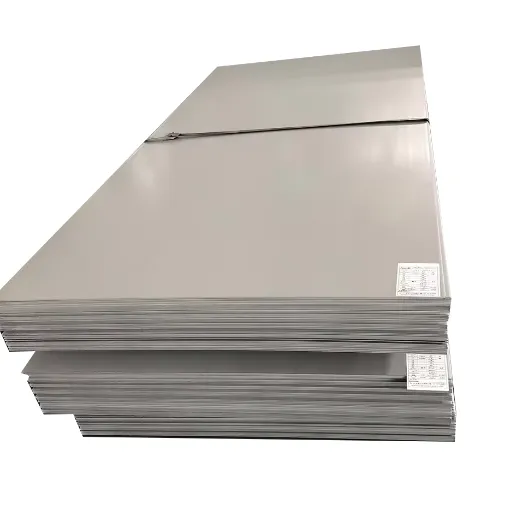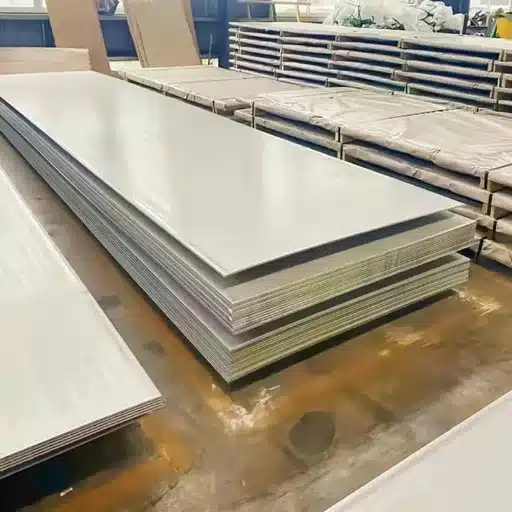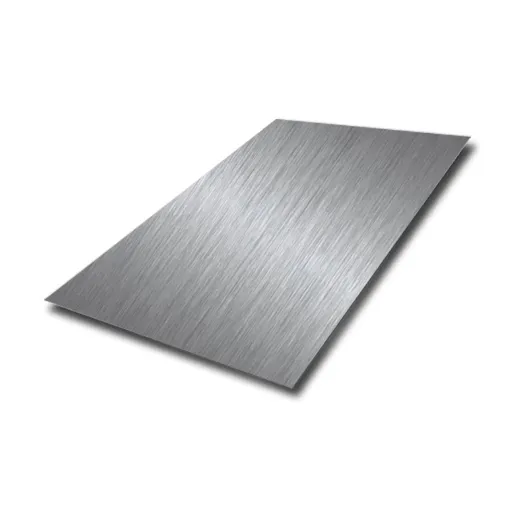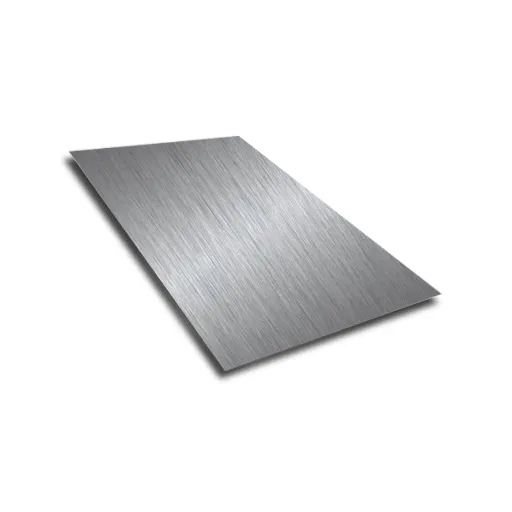Introduction to Hastelloy

Hastelloy is a material that predominantly consists of nickel and also contains some molybdenum, cobalt, iron, and chromium. Most importantly, since it is a chemically resistant metal object whose composition and properties do not react in the various environments in the industries or other areas. Hastelloy finds industrial uses in chemical, aerospace, marine, etc. environments as it is a type of corrosion-resistant alloy used in various processing equipment. This alloy has appreciable resistance to oxidation and pitting, not only in high-stress applications, but also in its performance. Also, in the high-degree environmental conditions, Hastelloy, as a component for the heat exchangers, as well as oven chambers and pressure vessels, contributed to improvement in the stresses conveyed materials contiguous to these elements.
What is Hastelloy?
Hastelloy is a branded name for a range of metal mixes, focusing on nickel. The other components include molybdenum, iron in various quantities, cobalt and chromium. This type of metal is employed in petrochemicals and other areas where superior chemical and high-temperature resistance is needed. In general, Hastelloy has earned a name known for its service in highly harsh and unusual environments, including oxidizing and reducing roles. The most common material characteristics in the design view are the excellent performances of environmental resistance such as cracking, stress corrosion, and localized attacks such as pitting. Hastelloy is therefore well suited for the transportation of highly corrosive fluids such as hydrochloric and sulphuric acid.
Interestingly, Hastelloy metal composites fall under distinct specifications and are also referred to as various Hastelloy alloys like Hastelloy-C276, Hastelloy-C22 and so on, each achievable for different applications and environments. Hastelloy C-276 has a great reputation for being able to resist strong oxidizers, and its exceptional performance in conditions that have liquids of chlorine gas, hypochlorite, and chlorine dioxide has been appreciated by many. In this respect, Hastelloy is often found suitable for such applications as the manufacture of power, chemicals as well as effluent processing plants where many operational difficulties are minimised. Last, being a corrosion-resistant metal, in any of its CP types, allows it to be used where engineering considerations and guarantees of integrity are of greatest importance. This is because, due to the afore-mentioned properties, Hastelloy manufacturing is free from additional constraints, including welding as well as machining.
Importance of Hastelloy in Industry
Hastelloy is an important metal in several applications due to its ability to withstand significant corrosion, assigning to this it possesses a higher yield strength and can be used in numerous applications. For instance, in cases where the primary concern surrounds the protection of the person and the environment, Hastelloy is broadly employed by the producers of chemical reactors, heat exchangers and distillation columns in addition to the protection of such components, which deal with the very hazardous chemicals like sulphuric acid, hydrochloric acid, and chlorine gas. This reduces the costs of maintenance and has a positive impact on the working durability of objects.
In addition to that, the material has inbuilt features that enable it to withstand the removal of complex shapes in contamination known as pitting, as well as another form known as crevice corrosion, both of which contribute to the Need for the material in marine and offshore industries. It is such a performance that is useful for the long-lasting operation of salt water components such as pumps, valves, pipes, and seabed constructions.
And, of course, this alloy is intensively used in other applications, not to mention its suitability for protecting against the adverse effects of wet chlorine, which is also impressive. Hastelloy, in this respect, has clearly outperformed its rivals by a considerable margin thanks to the option of aggressive operations of wet chlorine. Moreover, such severe applications have to be addressed in a most inappropriate way, but aggressive media is still there.
Recent studies have given distinct attention to advanced grades developed for new applications, such as FGD or waste-to-energy, utilizing Hastelloy C-22 or C-276, which is even more superior than previously thought. These improvements create new avenues of Hastelloy applications in industries that encourage Hastelloy efficiency along with ecological sustainability, while being understandable.
Physical and Chemical Properties of Hastelloy
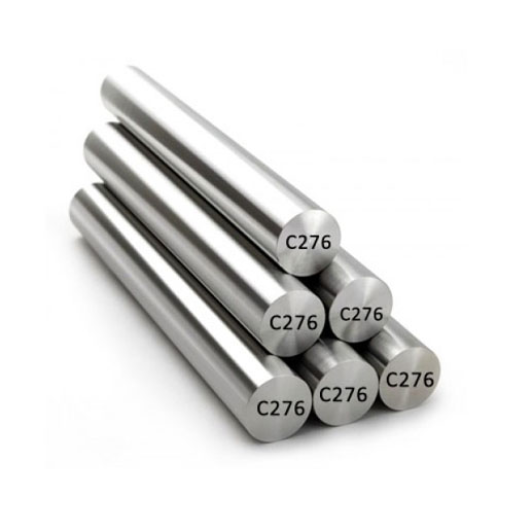
Corrosion Resistance
Hastelloy is resistant to oxidation, pitting and crevice corrosion to a great extent when used in systems containing oxidizing, acidic and gaseous media. This property makes the alloy an important material for many applications, such as in the chemical and marine sectors.
Mechanical Strength
Hastelloy has a remarkable resistance to strains and fracturing even under severe stress conditions and high temperatures and pressures, thus ensuring that the material is long-lived in the industrial applications.
Thermal Stability
Nickel Metal hydride alloy equipment and materials have excellent physical and chemical resistance to the extent of maintaining their structural stability at high temperatures and pressures which is required when used in, for example, heat exchangers.
Fabricability
Machining and joining Hastelloy is easy due to the unique properties developed during the fabrication process of solid solution strengthened nickel molybdenum alloy which is why it can be made into intricate shapes.
Chemical Composition
Several elements combine nickel, molybdenum, chromium, and iron in different quantities, to increase the endurance and strength of most grades of Hastelloy, but to minimize their deterioration not only during usage but also during storage in their underlying environments.
Composition of Hastelloy
- Nickel (Ni): Constituting to approximately 50%-70%, form solid solution with nickel and some other nickel-base alloys.
- Molybdenum (Mo): From 15%-30% of the nickel contents are added to resist the corrosion which tends to pitting and crevice corrosion especially in the presence of chlorides.
- Chromium (Cr): 14%-22% of electroplating solution is of Cr and its use is to improve oxidation scale resistant characteristics at elevated temperatures.
- Iron (Fe): Also increases the strength of the material although in reduced amounts; it is normally less than 5% especially as it is known to deteriorate the corrosion resistance of steel.
- Cobalt (Co) and Tungsten (W): These elements are added to add more mechanical strength to the alloy and additionally make it more resistant to some corrosive solutions.
- Carbon (C) and Silicon (Si): These elements are maintained in order not to cause carbide formation or embrittlement.
Mechanical Properties of Hastelloy
Hastelloy possesses outstanding properties that are suitable for use in hostile environments. The material is strong, having often strength above 100 ksi (kilotons per square inch), but this varies with the particular grade and how the material has been processed. Its modulus should usually be within the range of around 40 and 60 ksi. This means that the material can be subjected to higher stresses before it undergoes plastic deformation.
Also, Hastelloy is generally reputed for high elongation values, which usually range within 40% and 50%. This feature of the metal allows it to undergo substantial permanent deformation without breaking and thus is extremely useful for design activities that involve rolling or welding. While on another level, the hardness values for the alloy can range between 20 to 40 HRC (Rockwell Hardness Scale C) but can also be adjusted by employing some heat treatments or further working the material.
In addition, yet one important property for Hastelloy’s mechanical behavior is the remarkable ability to withstand any secondary and man-made deformation – that of creep – without occurrence of such even in case of temperatures up to approximately 1900°F (1038°C). Such properties presuppose a robust high temperature and pressure performance even under sustained high excitation and thus are relevant for such industries as aerospace, chemical processing, and energy. These mechanical aspects, when coupled with the resistance Hastelloy has against chemically corrosive environments, are considered to be what distinguishes Hastelloy as an ultimate material for stringent engineering tasks.
Corrosion Resistance of Hastelloy
One of the reasons Hastelloy is such a popular choice not only in aggressive environments but also across a wide spectrum of these, is the fact that it has a high resistance to corrosion elements. This is due to the fact that his material has a very high content of nickel and molybdenum. These elements enhance the material’s resistance to pitting and crevice corrosion, even in aggressive acidic liquids containing hydrochloric, sulfuric, and phosphoric acids, particularly at high temperatures. Also, their resistance to particularly oxidizing agents such as ferric and cupric chlorides helps in providing a very long service life that lesser resistant metals cannot in certain hydrometallurgical environments.
A clear advantage of Hastelloy is that it delivers an impressive performance albeit within oxidizing and reducing conditions, which is why it is a development material of choice for the chemical industries in multi-purpose chemical processing equipment. Laboratory studies of Hastelloy have proved its heightened resistance to local corrosion forms like stress corrosion cracking (SCC) and intergranular attack (IGA) even under very high operational loads. These properties decree its use in constructing equipment such as reactors, heat exchangers and piping systems in corrosive applications like chemical reactors, flue gas scrubbers, other industrial facilities like power plants and so on.
Types of Hastelloy

Hastelloy C-Series
- Includes alloys like C-22, C-276, and C-2000.
- Excellent in resisting both oxidizing and reducing environments.
- Commonly used in chemical processing and waste treatment applications.
Hastelloy B-Series
- Includes alloys such as B-2 and B-3.
- Specifically designed to resist hydrochloric acid and other strongly reducing agents.
- Standardly in use whenever immense acidity is required.
Hastelloy G-Series
- Examples include G-30 and G-35.
- Are specified for hybrid environments where corrosion is acidic and oxidizing.
- In particular, common in the manufacture of fertilizers and gas cleaner systems.
Different Hastelloy Grades
| Grade | Composition Focus | Corrosion Resistance | Applications | Key Features |
|---|---|---|---|---|
| Hastelloy C-22 | Nickel, chromium, molybdenum | Resists oxidizing and reducing chemicals | Chemical processing, pollution control | Versatile corrosion resistance |
| Hastelloy C-276 | Nickel, molybdenum, chromium | Handles oxidizing and reducing agents | Pulp, paper industry, chemical reactors | Excellent resistance to localized attack |
| Hastelloy C-2000 | Nickel, chromium, copper | Enhanced broad-spectrum acid resilience | Waste treatment, pickling process | Superior versatility in acid resistance |
| Hastelloy B-2 | Nickel, molybdenum | Resists hydrochloric acid | Chemical and vacuum distillation equipment | Stability in reducing atmospheres |
| Hastelloy B-3 | Nickel, molybdenum | Resists severe reducing chemicals | High acid concentration environments | Improved thermal stability |
| Hastelloy G-30 | Nickel, chromium, iron | Withstands oxidizing acids and fertilizers | Phosphoric acid production, flue gas scrubbers | High resistance to complex environments |
| Hastelloy G-35 | Nickel, molybdenum, chromium | Optimized for mixed acid resistance | Fertilizer production, flue gas processing | Superior oxidizer resistance |
Comparison with Other Alloys and Stainless Steel
| Alloy/Steel | Base Composition | Primary Strength | Common Applications | Notable Properties |
|---|---|---|---|---|
| Hastelloy G-30 | Nickel, chromium, iron | Resists oxidizing agents | Phosphoric acid, scrubbers | High resistance to mixed environments |
| Hastelloy G-35 | Nickel, molybdenum, chromium | Superior resistance to mixed acids | Fertilizers, flue gas processing | Optimized for acidic oxidizing agents |
| Stainless Steel 316 | Iron, chromium, molybdenum | Excellent corrosion resistance | Marine, medical devices | High aqueous corrosion resistance |
| Stainless Steel 304 | Iron, chromium, nickel | General-purpose corrosion resistance | Food, chemical processing | Affordable, widely available |
| Alloy C-22 | Nickel, molybdenum, chromium | Outstanding resistance to oxidizing acids | Waste treatment, chemical processes | Handles chloride-induced pitting |
| Alloy C-276 | Nickel, molybdenum, chromium | Exceptional resistance to severe chemicals | Pulp, paper industries | Effective in wet chlorine environments |
| Duplex Stainless Steel | Iron, chromium, nickel | High strength, stress corrosion resistance | Oil, gas, petrochemicals | Balanced microstructure, economic choice |
| Super Duplex Steel | Iron, chromium, nickel | Enhanced corrosion for harsh environments | Offshore platforms, desalination | High strength, cost-effective |
Choosing the Right Hastelloy for Applications
Calibrating the exact Hastelloy type suitable for a particular usage would require an evaluation of various factors, which include, amongst others, the environment of use, the range of temperatures, and the kind of chemicals through which the material is going to pass. Hastelloy is an alloy that comprises of nickel; and is often applied in the areas that need to retain its physical appearance and strength in the face of external forces which can be harsh. Each Hastelloy type, therefore, display unique characteristics that are mentioned towards a particular area of application.
Hastelloy C-22, for instance, is made with an all-around view; antioxidant and reducing agents affect it, and it is good for marine or chemical processing systems. In contrast, the Hastelloy C-276 metal is almost immune to the commonly occurring corrosion types such as pit or gully corrosion, which is the incinerator’s flue gas and any industrial waste treatment and collection furniture. However, for the high temperature duties it is without a rival – it is Hastelloy X that is very popular for its ability to withstand high temperatures and hold its shape which is a feature that is often found in aerospace and heating equipment.
In addition to Hastelloy’s grade specifics, some factors should be kept in mind as well – such as durability and suitability for the particular application or how difficult it is to obtain maintenance in the grade. Some grades are expensive at first but cost-effective in the long run; others are used up easily and require more maintenance, potentially increasing costs over time. Other cost benefit measures to consider in the process may include the fluid velocities to act upon, extent of chloride content and the tocked period for active lubrication for maximum material hastoyler performance.
Applications of Hastelloy
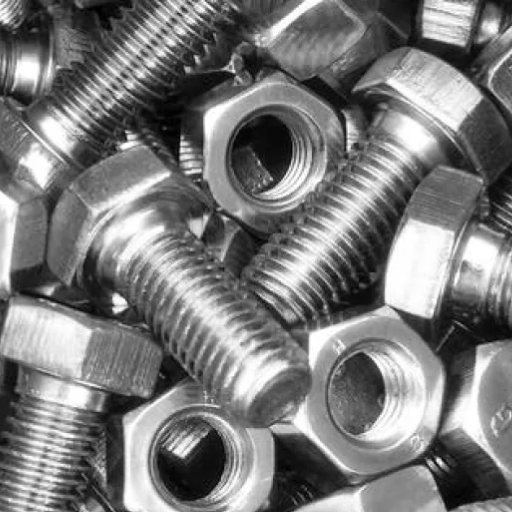
Hastelloy is a very helpful material when it comes to extreme resistance against corrosion and can be applied in various industries. Hastelloy is mainly used in the following industries:
- Chemical Processing: For reactors, heat exchangers, and piping systems that are exposed to attacks from hazardous media like hydrochloric or sulfuric acid.
- Aerospace: As components in jet engines and their lubricating system, where low-absorbable nitrogen and oil-burning surfaces are necessary for normal high-thrust operations.
- Marine Engineering: Stainless steel is subject to effective corrosion resistance in seawater. Components such as propeller shafts, heat exchangers and seawater pipelines are built in stainless steel.
- Power Plants: Many waste treatment and power plants use the benefits of reclaimed acid due to the incorporation of stainless steel in flue gas desulfurization systems for combating acidic gases.
- Pharmaceutical and Food Industries: Utilized in equipment requiring hygienic surfaces and resistance to chemical cleaning processes.
Its versatility and durability make Hastelloy a critical material for demanding industrial applications.
Using Hastelloy in Chemical Processing
The chemical processing industry depends on the use of Hastelloy for various reasons but most of all, it is the non-corrosive properties of the metals when used in high temperatures and corrosion-prone environments. They are used in, among other things, the construction of reactors or distillation liners, but it is pure size that attracts most of the attention for heat exchangers, especially plate-type heat exchangers for higher corrosive duties, or vessels for sliding or whipping duties. Which means that Hastelloy C-276 will be preferred to resist such attacks as hydrochloric acid, sulfuric acid and hypochlorites to a certain limit and its uses will be valid for such chemical processes which may lead to deterioration of the chemical plant.
State-of-the-art Hastelloy technology has progressed far in improving its quality, which has improved the weldability and the durability of corrosive applications. It has been found that equipment that is made of Hastelloy performs better and has less maintenance downtime, thus reducing the operating cost during its utilization. It also well accommodates the extreme conditions of pH balance and temperature which therefore saves the operation as well as the health of the operators in places where the industrial boil so high.
Hastelloy in Aerospace Engineering
Hastelloy is a material extremely helpful for aerospace engineering practice, especially for withstanding all the extreme weather conditions. This alloy is built with load-bearing components that are classified as critical while it is used in the manufacturing sector as corrosion-resistant wearable products. These products filament within the structure of the combustion chamber and turbine, the pressure chamber, as well as undergo high-temperature oxidation attack. However, its inherent properties for anti-cyclic cracking, and its resistance to atmospheric corrosion allow it to withstand stress, even to severe thermomechanical stress. Lack of ductility of the material and additional inclusion of cold work practices imply precision cutting and joining to be achievable during the computer-aided manufacturing. However, with ongoing progress in engineering processes, Hastelloy has not only become harder in terms of resistance to changes but also stronger in instances due to deformation and creep occuring during extended use, which is necessary for appropriate functioning of aerospace systems. Policy makers, based on this description, and other means including the listed attributes of Hastelloy, ensure that highly efficient engines and overall payloads are designed in order to function in the space world.
Marine Applications of Hastelloy
Marine-grade Hastelloy components, including propeller shafts, pumps, heat exchangers and valves are widely used in desalination plants, offshore oil and gas platforms, and naval ships. This is because they have the particular characteristics that help them avoid mechanical as well as chemical damage by seawater, in which the concentration of sodium is high. Hastelloy components are popular and are used to fabricate marine structures properly because they are corrosion-resistant even when the water contains more salt.
Hastelloy is hailed for working well with antifouling measures in the fight against living organisms in the sea,, which prevent the sulfide embedded in the sea water causing stress cracks when it finds its way to the metal. This in part explains why high grade Hastelloy material is the preferred choice for use in deep underwater tanks. Investigations have shown that Hastelloy C-276 and C-22, for example, improve composite performance when compared to the standard stainless steels as far as wear and tear, under the action of cross-fulid currents in pipeline environments. These features highlight the importance of Hastelloy in the further development of marine constructional systems for enhanced longevity and operational performance.
Welding and Fabrication of Hastelloy

For welding and making Hastelloy, special techniques are employed so as to make sure that its superior corrosion resistance and structural integrity is maintained. Popular welding technologies which are used to weld Hastelloy are Gas Tungsten Arc Welding (GTAW) and Shielded Metal Arc Welding (SMAW). This is because they are low heat input processes and that reduce the chances of defects occurring. As for the manufacturing process, great care should be taken ensure that the steel is not contaminated with carbon or brought into contact with carbon steel surfaces, as this would degrade its properties. In most cases, the item does not need to be preheated while on the racks to make it warm and post-weld heat treatment is often not required due to the strength and resistance of Hastelloy. Vegetation Metalos’ proper cleaning of surfaces and the use of suitable fillers are important during installation.
Welding Techniques for Hastelloy
When it comes to the uncultivated lands of Hastelloy, superior bonding can be accessed through special means and precautions by using Gas Tungsten Arc Welding (GTAW). More commonly known as TIG welding, it is widely used because this method provides accurate welding with minimal heat, ensuring that the weld is neat and very strong. Also, the cover gas, whether pure argon or argon/helium, is on the market at any time and serves as an additional measure to protect the weld from oxidation and support weld deposition. Moreover, it is essential to regulate the heat intake without allowing it to cross limits, as too much of it may cause excessive growth of grains, thereby lowering the extent of corrosion protection of the material.
When it comes to thicker sections or where higher rates of deposition are required, Gas Metal Arc Welding (GMAW) or MIG welding is common. The operation typically involves a wire which melts on the welding hotspot and generates a welding arc at the welding spot. It is essential to select the correct speed wire and stabilize the welding process to prevent pores from appearing in the weld. Pulsed currents are highly recommended in both GTAW and GMAW welding processes, as they help control the weld pool and minimize distortion in the weld.
Matching filler metals as close as possible to the base metal, such as AWS ERNiCrMo-3 or ERNiCrMo-10, is necessary in order to avoid any incompatibility and conserve the properties of use. Such issues may include cleaning surfaces free of all the contaminants or sealing weldments from the foundry environment altogether in order to free air for welding work. Implementation of such advanced welding procedures leads to the improvement of strength and anti-corrosion of the alloy welded assemblies as well as resistance to temperature.
Best Practices for Fabricating Hastelloy Parts
When creating Hastelloy metal components, interaction with the material needs to be regulated to keep the distinctive mechanical and resistance properties. Machine performance parameters top the list of important factors to consider. Carbide Tipped Cutters or Polycrystalline diamond products will be important, particularly because they cut the Hastelloy faster and last longer without being affected by the high temperatures of the material. The rules for cutting become more stringent in all such circumstances, given that work hardening is usually a problem with the high content of nickel in most of the nickel-base superalloys.
There is also a necessity to maintain the heat within the proper levels after welding. During processes like welding or machining, the rise in temperatures causes problems such as distortion of the microstructure of the alloy which may make it weaker. This can be remedied by the use of in-process cooling and proper management of heat input using heat sinks, as well as other measures. Another solution is the use of stress-relieving operations to resolve residual stresses as well as any deformations arising from the forming processes.
Precision is important, especially in joining efforts. Here, the maintenance of properly made and clean flanges allows steer-ed filler material usage (that is, ERNiCrMo alloys). This also involves more advanced use of the tungsten inert gas welding process. This, therefore, produces more durable corrosion-preventing welds that are very useful in applications in the chemical and shipping industries, using Hastelloy, for example.
Lastly, the importance of surface finishing for the effect of the material properties of the alloy in aggressive environment cannot be underestimated. Polishing or passivation removes any surface films and increases the resistance to pitting and crevice corrosion. These modifications in production help in utilizing Hastelloy more efficiently and yet retaining its inherent high properties.
Reference Sources
-
“Internet of Things for a Smart Campus On Line Monitoring of Water Consumption in University Buildings”
- Key Findings: This study proposes a monitoring system for water consumption in university buildings. It mentions the use of a piezoresistive silicon with a Hastelloy pressure sensor.
- Methodology: The system integrates IoT technologies for real-time monitoring.
- Read more
-
“Acid Properties of GO and Reduced GO as Determined by Microcalorimetry, FTIR, and Kinetics of Cellulose Hydrolysis-Hydrogenolysis”
- Key Findings: The study explores the acid properties of graphene oxide (GO) and its reduced form. Hastelloy is mentioned as part of the equipment (a 100 mL Paar Hastelloy autoclave).
- Methodology: Techniques like microcalorimetry and FTIR were used to analyze the materials.
- Read more
Frequently Asked Questions (FAQs)
Q: What is Hastelloy?
A: Hastelloy is characterized by a series of high grade nickel alloys which possess extraordinary resistance to corrosive and oxidizing chemicals. Furthermore, because of this factor, this nickel can be widely used in various areas including, but not limited to, chemical, aerospace and petroleum industries. It is special due to its wear and oxidation resistance property.
Q: What are the Different Grades of Hastelloy?
A: Hastelloy has three types. Hastelloy C, Hastelloy B, and Hastelloy X are the three types included in Hastelloy with the commonality that they are all made for different purposes. With the features and performance that each of them has, you can best understand what C, B, or X is the best grade to be used for in the industries. For example, Hastelloy C over a duration has been chosen largely due to its unrivaled resistance to stress corrosion cracking and pitting in several chemical processes. On the other hand, Hastelloy B due to the significant breakdown on these types of environments as a result of sophisticated food grade stainless steel molybdenum content is the best. Industrial area owners are forewarned about the importance of learning to differentiate between different Hastelloy grades.
Q: What are the Physical Properties of Hastelloy?
A: Hastelloy is noted for above average attributes, including its ability to maintain strength when temperatures are raised, possession of amicable plasticity, and also fire resistance to attack from different surroundings. These allowances of Hastelloy facilitates its usage in jet engines and chemical handling. Typically, these improvements are mostly added to molybdenum or chromium and other metals in the alloys to enhance the properties of the alloy. As for the composition of Hastelloy, these elements are essential contributors to the strength and resistance of Hastelloy in such environments.
Q: How is Hastelloy Used in Chemical Processes?
A: Corrosion wastes an estimated two percent of developed countries’ gross production, which includes the energy used. Countries with highly developed industries are estimated to have their annual costs of material damage and repair three to four percent of their domestic product. Among the factors influencing the economic efficiency of production, the basic issue is the existence of a range of materials that can form after the use of processable materials. However, environmental costs will be less.
Q: What Makes Hastelloy Alloys Versatile?
A: The reactiveness of the Hastelloy series can very well be attributed to the way in which the material is composed chemically and its mechanical performance as well. Classified as a nickel alloy this material called Hastelloy, is able to bear causing conditions since it can withstand both high temperatures and environments which are called to be aggressive. Given that it is possible to join Hastelloy grades appropriately devoid of having to undergo corrosion damage, it is easier for this to be done in the construction and fabrication of equipment. In demand situations, Hastelloy provides advantages to their users rather than the usual metallic materials stainless steels for instance.

